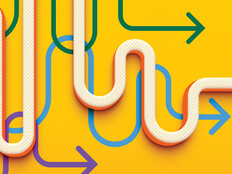AI Is on the Upswing in Optimizing K–12 Education
Artificial intelligence may seem like a future technology waiting in the wings to burst on to the K–12 scene, but it has made its presence known in classrooms already. Most teachers are using AI and may not even know it.
Thanks to AI automation, educators are saving time and diving deeper into personalized learning and differentiated instruction.
For example, reading teachers may use differentiated leveling programs to determine what instruction students need and what gaps exist. Previously, teachers had to complete these processes manually, which was time-consuming and pulled them away from valuable one-on-one time with their students.
AI also is helping to automate grading. It can even assess the written portions of tests fairly well. Obviously, AI won’t evaluate a writer’s personal flair or artistry, but it can quickly grade technical rubrics, such as varying sentence structures, word length, appropriate word choice and subject-verb agreement. This efficiency is a beneficial aspect of AI that teachers would do well to embrace.
I recently saw an AI-based program grade math calculations. It transfers the student’s handwriting into text the program can read, then it marks each step with a green check or a red x. The student can follow along to better understand his or her math mistakes and successes. In that way, the program serves as a mechanized tutor, offering individualized line-by-line support for an algebra or trigonometry problem, which is something a teacher would struggle to do.
AI Gives Teachers Time Back to Educate
These examples illustrate how AI can assist personalized learning and differentiated instruction, while also saving teachers quite a bit of time to get back to educating.
There is so much data that supports the saying “30 seconds a day adds up to six instructional hours by the end of the year.” If we can use AI with that kind of mentality, I think it would prove valuable in ways we can’t even predict yet.
It’s time to determine how AI can improve other parts of our instructional practice too. Let's identify what our current roadblocks are and then make sure that we include AI in the survey of options for fixing those obstacles.
And, educators, never fear. Sometimes I hear grumbling that AI may someday replace teachers altogether. The idea that “they're going to replace me and put a portal into the student's brain to download information” is still the stuff of science fiction.
AI today is only a cheerful assistant, saving teachers time and helping their students along the way.
We will always need teachers and human interaction in the classroom. Anything else does not compute.
This article is part of the "Connect IT: Bridging the Gap Between Education and Technology" series. Please join the discussion on Twitter by using the #ConnectIT hashtag.
![[title]Connect IT: Bridging the Gap Between Education and Technology [title]Connect IT: Bridging the Gap Between Education and Technology](http://www.edtechmagazine.com/k12/sites/default/files/articles/2014/05/connectit.jpg)









